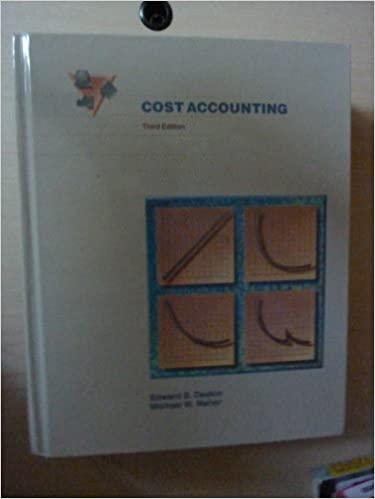Evaluate Investment Choice and Its Impact on Performance Measures, with Joint Costs: Amberina, Inc., operates several different
Question:
Evaluate Investment Choice and Its Impact on Performance Measures, with Joint Costs: Amberina, Inc., operates several different semiautonomous divisions. A problem arose with respect to two divisions that process and sell plastics products. The Plastics Blending Division obtains materials that it blends and, as a result of a joint process, splits into Phyrene and Extrene. The Plastics Blending Division processes the Phyrene further and sells the resulting product to the outside. The Extrene is sold to the Tools Division, where it is molded into tool handles and sold. In a typical year, $240,000 of costs are incurred in the blending of the feedstock. Phyrene is processed further at a cost of $80,000 and is then sold to the outside at a price of $325,000. Extrene is sold to the Tools Division at "cost plus 20 percent," where cost is determined on the basis of net realizable value at the split-off point. The Tools Division incurs an additional cost of $60,000 to mold the plastic and sells the resulting tool handles for $175,000. The company's cost of capital is 15 percent. The Plastics Blending Division has assets of $240,000, while the Tools Division has assets of $120,000. The Tools Division learned that it could purchase the company that it is selling the handles to and, thus, obtain the ability to manufacture complete tools. The additional processing costs would amount to $61,000 per year, and revenues would amount to $360,000. In addition, depreciation expenses would be incurred based on the amount spent to purchase the tool manufacturing company. The manufacturing company is asking $265,000 for its assets. These assets would be depreciated on a straight-line basis for internal reporting purposes. The assets are expected to last five years and have no salvage value. Tax depreciation would be as follows: Year 1, $35,000; Year 2, $80,000; Years 3-5, $50,000 per year. In addition, $50,000 in working capital would be required to operate the tool manufacturing plant. Income taxes are 40 percent of net income before taxes.
Required:
The head of the Tools Division wants your assessment of the feasibility of the investment in terms of
(a) net present value of the project and
(b) the impact of the project on the Tools Division return on investment. You may assume that if the tool manufacturing plant is acquired, there is no alternative market for the tool handles.
Step by Step Answer:






